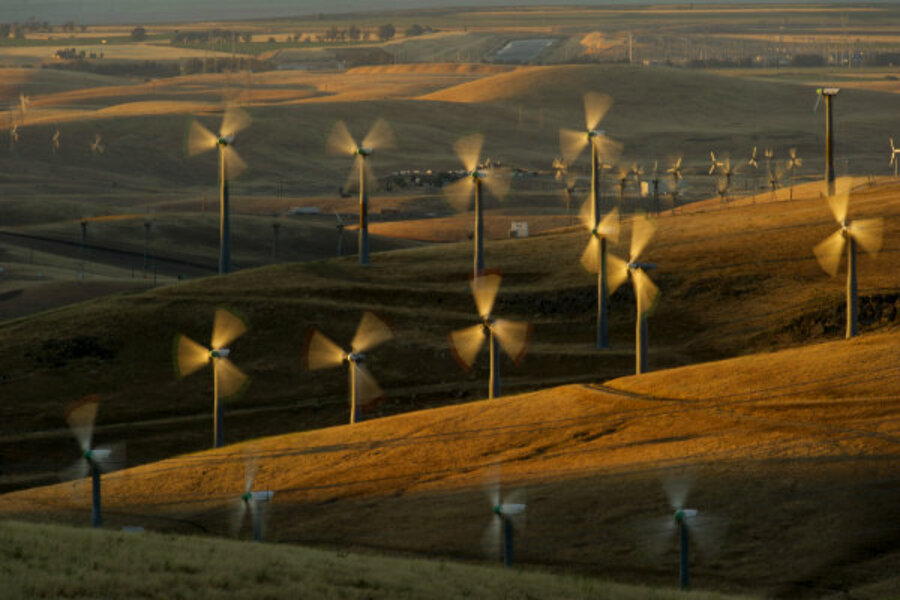US can't afford to cede green energy industry to its competitors
Loading...
| Oakland, Calif.
The clean energy industry is as American as fireworks on the Fourth of July. It invented the solar cell. It designed and perfected the electric wind turbine. The sector has largely defied the economic recession, with worldwide investments soaring 600 percent between 2004 and 2011. The result? Texas now has more solar workers than ranchers. California now has more solar workers than actors. And the United States now has more solar workers than coal miners or steel workers. But we’re losing our edge.
Last year, for the first time, China surpassed the US in terms of total dollar investments in clean energy. America now ranks an unimpressive 10 on a list of countries ranked by clean energy capacity installed since 2006. It doesn't even make the top 10 lists for clean energy investment growth in the past five years.
This US drop matters because clean energy adds an outsized spark to the economy. The solar energy sector added jobs at nearly six times the rate of the rest of the economy in 2011-2012. The US added more green jobs during the recent economic recovery than jobs in any other sector, according to the Bureau of Labor Statistics.
These jobs span geographies and skill sets. Decentralized energy, based on the local harvest of wind, water, and sun, lends itself to the kind of local, entrepreneurial, job-creating businesses America so desperately needs. They are a far cry from the giant, multinational companies that lead the fossil fuel energy industry.
For example, nearly 70 percent of the 6,000 parts in wind turbines installed in the US are made in America. In 2011, two of the three largest new factories built to make these parts were sited in small towns – Brighton, Colo., and Yorktown, Ind. – with the third factory built in New Orleans, La.
In the solar industry, the growth hasn’t been in manufacturing, but in marketing, sales, finance, system design, permitting, installation, and maintenance. The beauty of such growth is that most of those jobs can’t be outsourced, because they depend on proximity to customers all over the country. Some of the most important sites for new solar developments will be local – the rooftops of military bases, public schools, convention centers, community centers, and churches.
America can’t afford to lose the jobs and potential of green energy. All of its major competitors, most countries, and many US states have standards mandating the percentage of energy that must be derived from green sources by a certain date. China has a standard of 15 percent renewable energy by 2020, and California is targeting 33 percent by the same year. The US should do the same thing. President Obama has called for 80 percent clean energy by 2035, but workable legislation that would get us there has yet to materialize.
Not only would such a standard be good for the US economy, it would have popular support. Last year, a study found that the average American would be willing to pay $162 more per year in energy costs for a standard that would get the country to 80 percent clean energy by 2035. That’s far more than such a standard would cost to implement.
Polling shows that a clean energy economy appeals to people across the political spectrum. That’s because it’s not just about jobs. It’s about leadership. It’s about avoiding a century of conflict and scarcity, which come with climate change and diminishing natural resources. Leading the development of technologies that provide cheap, clean energy for all is about expanding energy freedom for people in the US, and giving access to the most basic things – electricity, hot water – for people in need around the world. Developing clean energy is about all of us, and our shared future.
Billy Parish is president of Mosaic, a clean energy investment platform, and the author of “Making Good: Finding Meaning, Money and Community in a Changing World.”





